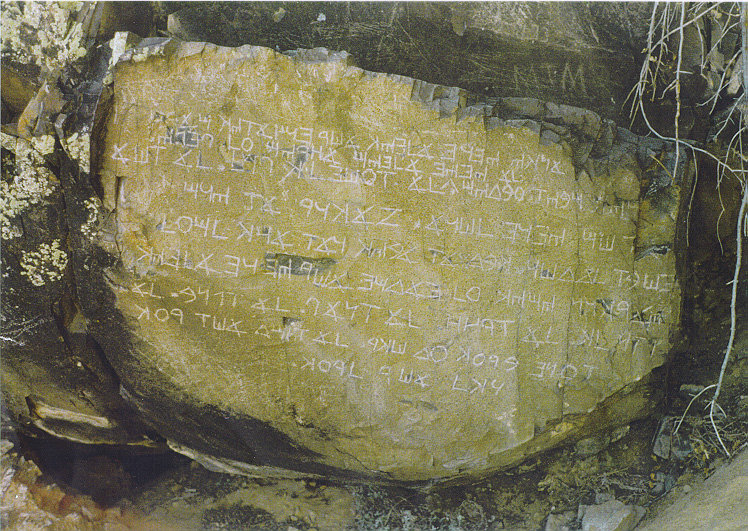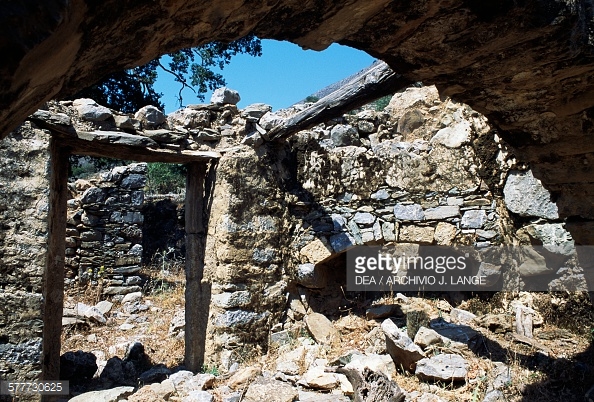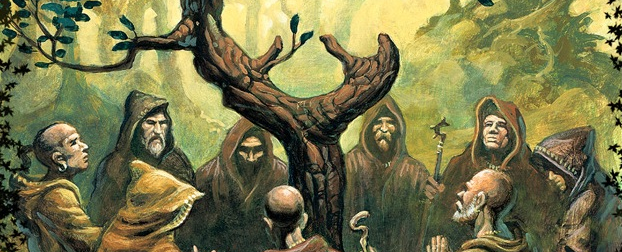“The Hohokam were the original Phoenicians, migrating into the region three hundred years before the birth of Christ and  staying for seventeen hundred years.” Len Sherman
staying for seventeen hundred years.” Len Sherman
Many people are not aware that the name of the red rock spiritual place in the Southwest of the United States that we know as Sedona, Arizona, was founded by a biblical people we know as the Sidonians from the island of Crete. The Greeks had called them the Phoenicians, the Egyptians had known them as the Sea Peoples, and they are also known in the Scripture as the Hebrew people.
You will find that my claims of the Sidonians can actually be backed up by science, history, and simple etymology. For example, the name of the beautiful city called Sedona, is derived from the name of their home, Sidon. The name Sedona is derived from the Hebrew Sidonia ( Σιδών, ῶνος, ἡ). Hence, the Phoenician Hebrew Indians of Sedona, Arizona.
 This connection shouldn’t surprise many of you, given the fact that the capital, and largest city of the state of Arizona, Phoenix is named after the Phoenician Hebrews (Sidonians). For more than 2,000 years, the Hohokam peoples whom I believe to be the Phoenicians and Sidonians, occupied the land that would become in Arizona known as Phoenix and also Sedona.
This connection shouldn’t surprise many of you, given the fact that the capital, and largest city of the state of Arizona, Phoenix is named after the Phoenician Hebrews (Sidonians). For more than 2,000 years, the Hohokam peoples whom I believe to be the Phoenicians and Sidonians, occupied the land that would become in Arizona known as Phoenix and also Sedona.
It is well known that the Phoenix was a symbol of the Phoenicians. The symbol of the Phoenix represents rebirth and reincarnation. It was adopted on our seal under the laws of heraldry, and is also the official bird and symbols of the United States of America, which symbolizes our Phoenician origins.
The meaning of the word heraldry is the practice of devising, granting, displaying, describing, and recording coats of arms and heraldic badges. In each country in the world, you will find symbols that represent, and/or as a form of identification of the regime in control of the land. The same can be said about Sedona being the home of the Sidonians. The connections to the Phoenix, I will explain in a future article.
THE HOHOKAM ARE CONNECTED WITH THE SEA PEOPLES (SIDONIANS/PHOENICIANS/CRETANS)
History tells us that Sedona was inhabited by a tribe of Indians known as the Hohokam during the period that some researchers believe began as early as 300 B.C., while others propose a start date as late as 500 A.D. to 700 A.D. As I explained in a previous article, the name Hohokam in Egyptian, literally means “Sea Peoples” or “Foreigners.” The historic Sea Peoples came from Asia Minor and once threatened to conquer the Egyptian empire.”(See Link to DNA Consultants)
This is why Sidon was the home to political supremacy long before Tyre became a city of prominence, and for thousands of years. The term Sidonian came to be restricted to the inhabitants of the city, and before that time it was equivalent to Phoenician. The first mention of Sidon appears in Papyrus Anastasi I, of the thirteenth century B.C., which describes the voyage of an Egyptian into Syria, Phoenicia and Palestine.(see: Sidon: A Study in Oriental History, Volume 4 by Frederick Carl Eiselen)
In the Scripture, the Center of the World’s Naval power is at Sidon, which is easily connected to what is now called Souda Bay by its older name of Saida, and these people are described in the same exact mannerisms and culture as that of the Phoenicians/Sidonians/and Cretans.
I also give evidence of an ancient stone left by the Hohokam with the Phoenician Hebrew text of the 10 Commandments  inscribed upon it. The stone is called the Los Lunas Stone found on a 400 foot high mesa in Hidden Mountain, New Mexico, near Los Lunas, New Mexico, about 35 miles south of Albuquerque.
inscribed upon it. The stone is called the Los Lunas Stone found on a 400 foot high mesa in Hidden Mountain, New Mexico, near Los Lunas, New Mexico, about 35 miles south of Albuquerque.
It is no secret that the Phoenicians were the first great pioneers of the sea and that they had come to America before many of the following cultures such as the Greeks, Romans, Vikings, and Spanish. They were also some of the first Old True Freemasons who had excelled all ancient cultures in building, and left this evidence in many countries around the world. This is why the modern Masons honor the first true Mason of their craft as the Phoenician King, Hiram Abiff. This title is to show the true lineage of the Craft as beginning with the Phoenicians, who I have said many times before had called themselves Sidonians.
THE CANALS OF THE HOHOKAM SIDONIANS OF SEDONA, ARIZONA
 The Hohokam built the first ancient canals in North America, and irrigation farming to the brutal dry Sonora desert just like the Egyptians had done in Egypt, which leads me to believe that their culture had influenced itself by Egypt. Their water system was fed by the Salt River in order to sustain their large and complex agricultural society approximately 1,
The Hohokam built the first ancient canals in North America, and irrigation farming to the brutal dry Sonora desert just like the Egyptians had done in Egypt, which leads me to believe that their culture had influenced itself by Egypt. Their water system was fed by the Salt River in order to sustain their large and complex agricultural society approximately 1,
These canals (trunk canals) were 60-70 feet across and 20 feet deep, leaving the other eight hundred miles of (distribution canals) between 10-20 feet across and respectively 10 feet deep, followed by yet more (lateral canals) or feeder ditches which fed the fields. Modern archaeologists marvel that the canal system is engineered to almost perfection in terms of grade, and flow (three feet of drop per mile) and many of the canals in use today in Phoenix are laid right on top the original Hohokam ones. Some researchers claim this was all done by hand using only sticks and flat rocks, and moving the material with baskets. Please keep in mind that this was all done in one of the most brutal, dry and hottest deserts in the world. The soil here isn’t soft but instead is hard packed desert floor as well as Caliche clay.(Link thephoenixenigma.com)
The Hohokam people who show up in North America practically out of nowhere are some of the most talented canal builders, Masons and artists in the region. Simply put, no culture or tribe could move and reroute water more efficiently than the Hohokam Indians. The canals they built are still considered an engineering marvel, and they still exist today.
That is an enormous construction feat that was obviously created by a people with a high level of intelligence and unsurpassed construction knowledge. In addition to these construction and engineering skills, the Hohokam would also need to have a strong and powerful governmental structure in place to manage this complex society. You can’t direct and feed tens of thousands of people, control massive building projects that may have took hundreds of years to complete, and also protection of their culture without an intelligent and powerful governmental system in place.
These type of skills take hundreds, if not thousands of years to develop in a race and culture of people through learned application and trial and error. Think about this for a moment. These construction and engineering skills they must have learned from someone, and this someone would be their ancestors whom I believe to be the Phoenicians who were descendants and cousins of the first master canal builders, the ancient Egyptians.
The archealogical evidence, timeframe, and history can easily link these cultures together as one seperated just by continents and oceans that they simply traversed with their master boat and sailing skills. The evidence they left behind such as the Phoenician Hebrew texts written upon stone, hundreds of miles of canals, masonic building skills and artistic wares prove who they were, which even the most amateur historian and archaeologist can recognize these golden links between the East and West.
The National Geographic even mentions these connections in a 2012 article, “Will Modern Phoenix Outlast the Prehistorical Hohokam? In this article the author compares modern Phoenicians (we Americans) with the Hohokam Indians.
“For the Hohokam, the capital and energy needed to acquire their water was as visible as the sweat on their backs. Archeologists estimate it took nearly a million person-days of human labor to construct just the trunk lines of one of the Hohokam’s major canal systems. That’s equivalent to 2,740 people working seven days a week for a year. And that’s not counting maintenance and repair.
For modern Phoenicians, by contrast, abundant water arrives at their doorsteps cheap enough to irrigate big lawns and fill swimming pools – arguably proof of modern water management’s success.
And maybe this is the defining difference between the two cultures’ relationship with water: for the Hohokam, visible costs and the hard reality of water’s limits, while for the Phoenicians, hidden costs and an illusion of plenty.
So which culture will win the endurance test?”
This connection of the Hohokam to the race of the Phoenicians who we also know as the Sidonians, we can find in the Scripture  where it is said that Canaan became of Sidon his firstborn and Seth that was distinguished for wealth and traffic, situated near the Mediterranean on the borders of Judaea. This Seth I believe to be the Egyptian Pharaoh Seti or Suti, who was the forefather of the 19th dynasty. He was the father of Pharaoh Ramesses I, who reigned for a very short time (1318–1317) but gave his name to one of the most illustrious families in history, the Ramessides. He was followed by Seti I (1317–1301).
where it is said that Canaan became of Sidon his firstborn and Seth that was distinguished for wealth and traffic, situated near the Mediterranean on the borders of Judaea. This Seth I believe to be the Egyptian Pharaoh Seti or Suti, who was the forefather of the 19th dynasty. He was the father of Pharaoh Ramesses I, who reigned for a very short time (1318–1317) but gave his name to one of the most illustrious families in history, the Ramessides. He was followed by Seti I (1317–1301).
Diodorus Siculus (who calls Seth by the name of Sesoösis), and Strabo who said he conquered the whole world and was at the head of a large army that invaded Libya, Arabia, Asia, Europe, Thrace, and even Scythia and Ethiopia. According to Strabo and Pliny, Seth constructed a canal between the Pelusiac branch of the Nile and the Red sea. It was completed by his grandson, Ramses II (Egypt: Handbook for Travellers) whom I believe to be one of the forefathers to the Phoenician race due to his alliance and pledge of Brotherhood for all time with a Hittite King and his marriage to his daughter who was princess of the Hittites. The alliance of races created a new race being that of Adam which is a word that means red man in Hebrew.
Necho, according to Herodotus, about 600 B.C., projected upon the same route the first ship canal. About 270 B.C., Ptolemy Philadelphus, according to Diodorus, carried the canal to the Red sea. It was about 92 m. long, about 150 ft. wide, and from 15 to 30 ft. deep. (The Condensed American Cyclopaedia: Volume 1)
THE MASONIC HOHOKAM
The Phoenicians were  some of the first North America Masons who constructed the first small, square houses made of wattle in America. This Masonic claim can be backed up in my article, “The American Indians and Phoenician Hebrews: Masonic Square and Compass,” where I show that the oldest Masonic compass and square (pictured to the right) found in the United States was made of sea shells, showing their connection to the sea and also the arts which they perfected. It was dated to over 1,800 year ago, and found at a Hohokam settlement now called the Casa Grande ruins in Arizona.
some of the first North America Masons who constructed the first small, square houses made of wattle in America. This Masonic claim can be backed up in my article, “The American Indians and Phoenician Hebrews: Masonic Square and Compass,” where I show that the oldest Masonic compass and square (pictured to the right) found in the United States was made of sea shells, showing their connection to the sea and also the arts which they perfected. It was dated to over 1,800 year ago, and found at a Hohokam settlement now called the Casa Grande ruins in Arizona.
33rd Degree Freemason and author, Manly P. Hall said it was significant because of its striking to the Masonic compass and square. Indian baskets, pottery, and blankets frequently bear ornamental designs of especial Masonic and philosophic interest.”
The Phoenician and Sidonian Masons of Sedona, Arizona and who we know as the Hohokam, had left ample evidence in Sedona such as the Honanki Ruins shown in the picture below. They were masters at building directly into the sides of mountains and cliffs, where they used the natural landscape to build their dwellings.
Here is an imaged of Lost Canyon Vortex, Sedona, AZ. This ancient ruin is located deep in the back country.
This same method of building can be found in almost every place the Phoenician Hebrews/Sidonians had settled and called home. As I mentioned above, Sidon was the oldest city of Phoenicia, and the island of Crete. On the island of Crete you will find their Masonic splendor of stone buildings over thousands of years in the very same construction embedded into the mountains and hills of Crete such as the images below like this ancient Mitato, stone building in Kroustas, Crete, dating from the time of the Phoenicians/Sidonians.
These cave homes pictured above on Crete, I believe to be the very first representations of this type of building into mountains, which they had obviously got better at their Masonic Craft as time moved forward like with the Hohokam. In addition, there are countless ruins such as in Knossos and in almost every nook and cranny on the island that you will find the demolished stone structures built by these first Masons.
Magnificent Places like Akrotiri, which is also known as the Holy Mountain of Crete due to its many churches and monasteries. It is known amongst locals as the “Acropolis” of Chania.
Also Monastery of St. John the Hermit, or simply Katholiko. Here you will find what is known as the Cave of St. John the Hermit, who is thought to have come here from Egypt and was active in many parts of Crete, such as Azogyre, before ending up at Akrotiri. The Cave was once the bed of an underground river, is over 100 metres long, and covers an area of 1,500 sq.m. that was said to be the retreat of St. John the Hermit.
In the time of Homer, the Sidonians/Phoenicians were eminent for their trade and commerce, their wealth and prosperity, their skill in navigation, astronomy, architecture, and for their manufacturing of glass, etc. This is another connection I can make between the Phoenicins/Sidonians and the Hohokan People, with the manufacture of glass. In many Hohokam sites such as Casa Grande ruins where there have been discovered glass beads and evidence of glass making.
Some researchers and authors falsely claim that this unique skill of manufacturing glass was brought to the area by the Europeans and Spaniards. But the ancient facts show that it has been proven that this unique skill was first invented, or at least made popular around the world by the Merchant Marines we know as the Phoenicians, who called themselves Sidonians.
With the Hohokam being their descendants, it makes perfect and reasonable sense that they would be able to easily import these skills to the Americas along with many other skills such as canal and home building, and the powerful governments needed to manage them, that have been left in the sands of time waiting for the truth to be rediscovered.

Moe is the founder of GnosticWarrior.com. He is a father, husband, author, martial arts black belt, and an expert in Gnosticism, the occult, and esotericism.















Phoenicians the children of Belus …created Venice…Iberia…etc…some say they are the freemen of the Templars who landed in the Carribean
Thank you with much Gratitude for your work.
You are welcome Lynn and thanks for the kind comment!